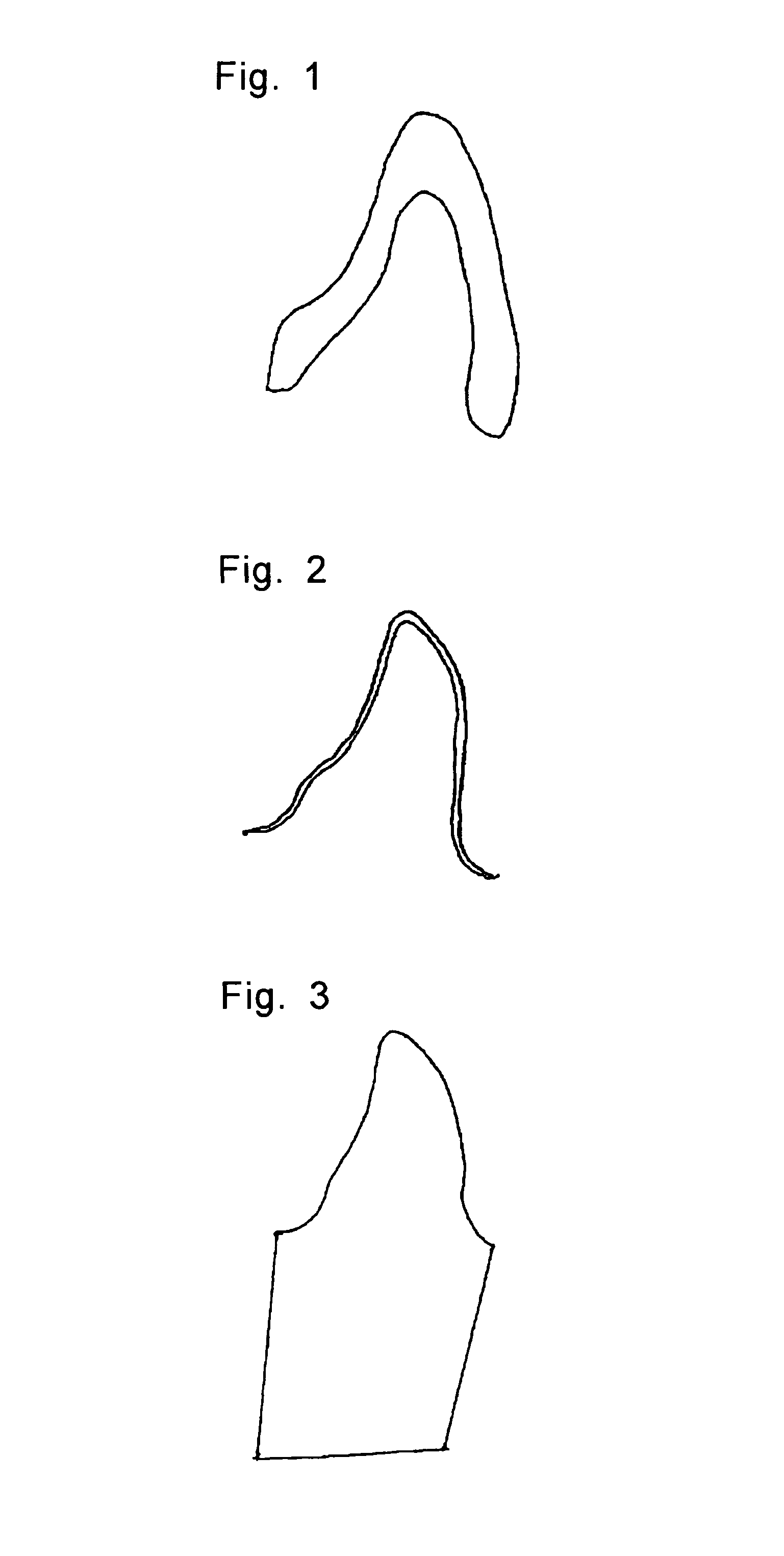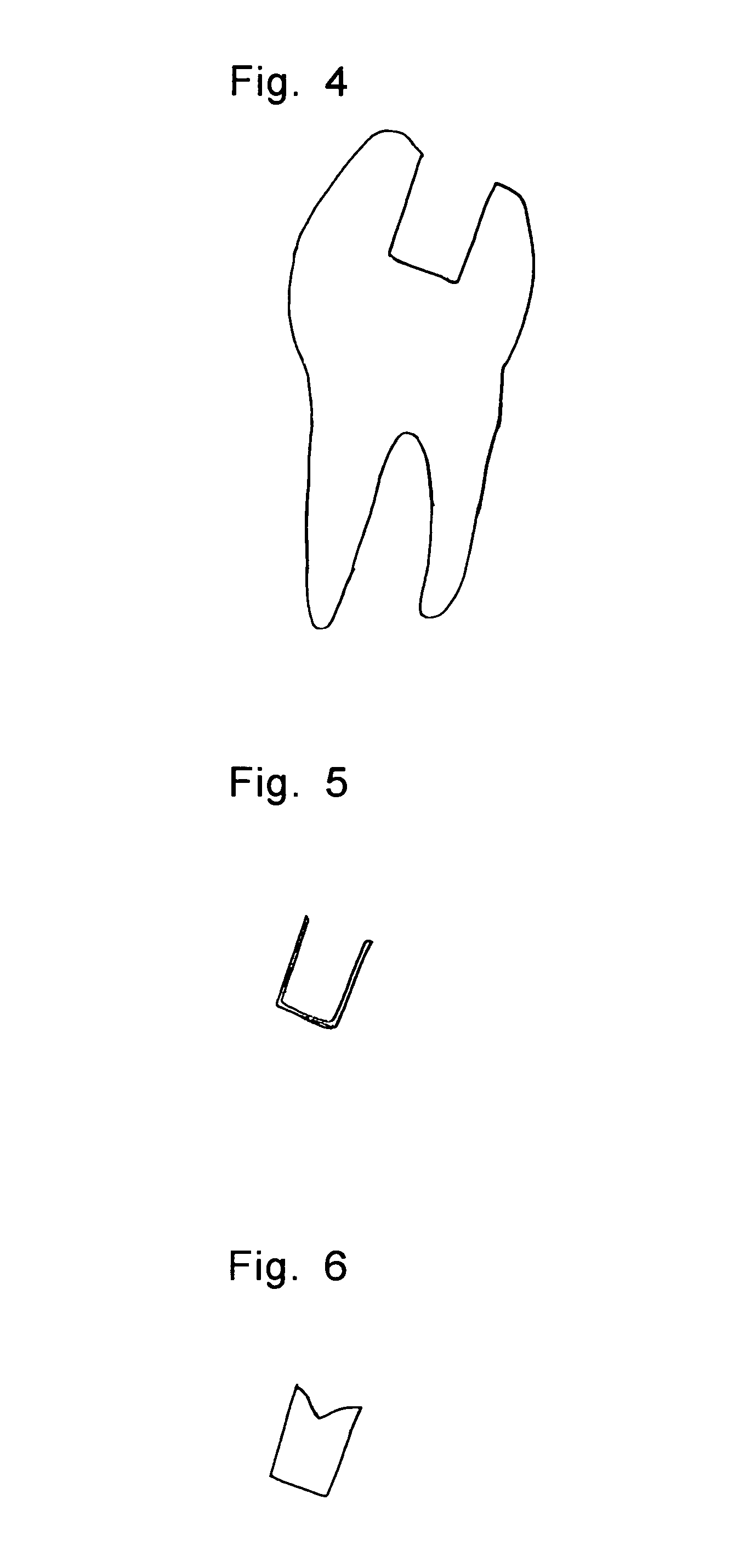The use of a tooth for a jaw tooth model to be used for therapeutic practices in the
oral cavity formed of an
epoxy resin or a
melamine resin is wide spread because of problems such as lack of natural teeth for therapeutic practices and infection diseases associated with a
natural tooth.
Therefore, even when performing formation trainings such as anchor tooth formation and cavity preparation, the
cutting sensation and handling properties are different from that in actual oral work, which confuses the students.
Specifically, the
epoxy resin and the
melamine resin are soft and thus there is a tendency to overcut them, while the
natural tooth is hard and there is a tendency not to satisfactorily
cut it.
As a result, there is a possibility not to overcut it upon treatment and it is not easy to satisfactorily perform applications.
Therefore, even when performing formation training such as anchor tooth formation and cavity preparation, the
cutting sensation and handling properties are different from that in dental work in the
oral cavity in practice, which confuses the students.
However, since the cutting properties of the tooth model are different from those of a natural tooth, even when performing formation training such as anchor tooth formation and cavity preparation, the cutting sensation and handling properties are different from those of actual oral work which confuses the students.
A conventional tooth model has not satisfactory cutting properties.
Therefore, the
patent document discloses that the development of a tooth model having cutting properties resembling cutting properties of a natural tooth is required, but does not disclose sufficient cutting sensation.
However, the cutting sensation is not still improved.
However, any tooth model is formed of a resin as a base material, and the cutting sensation is not still improved.
However, there is no description about preferred materials and the cutting sensation is not still improved.
Although the jaw tooth model has these problems, there have almost been no studies carried out on the problems of the jaw tooth model.
Furthermore, since only skilled persons can evaluate, considerable effort is required.
However, according to this method, 3D data must be obtained for every formation and thus it was difficult to evaluate data of a number of students within a short time.
However, these teeth could not be used for the method since they were not for evaluating the formation.
Besides, it is impossible to evaluate treatment of formation of an anchor tooth, the formation of a cavity, and the like.
Although there is a possibility which specifically shows the shape of the natural tooth and enables experience of cutting closer to practice, it is impossible to evaluate a treatment of the formation of an anchor tooth, the formation of a cavity and the like.
However, since in the invention, the non-
contact high-speed three-dimensional shape analyzer must be used for evaluation, large-scaled equipment is required and a long time is required for the measurement of the shape, and thus the model tooth could not be easily used for evaluation in a lesson.[
Patent Document 1] Japanese Unexamined Patent Publication (Kokai) No. 2004-94049[
Patent Document 2] Japanese Unexamined Patent Publication (Kokai) No. 5-241498[
Patent Document 3] Japanese Unexamined Patent Publication (Kokai) No. 5-241499[Patent Document 4] Japanese Unexamined Patent Publication (Kokai) No. 5-241500[Patent Document 5] Japanese Unexamined Patent Publication (Kokai) No. 5-224591[Patent Document 6] Japanese Unexamined Patent Publication (Kokai) No. 5-216395[Patent Document 7] Japanese Unexamined Patent Publication (Kokai) No. 5-224591
 Login to View More
Login to View More  Login to View More
Login to View More 


